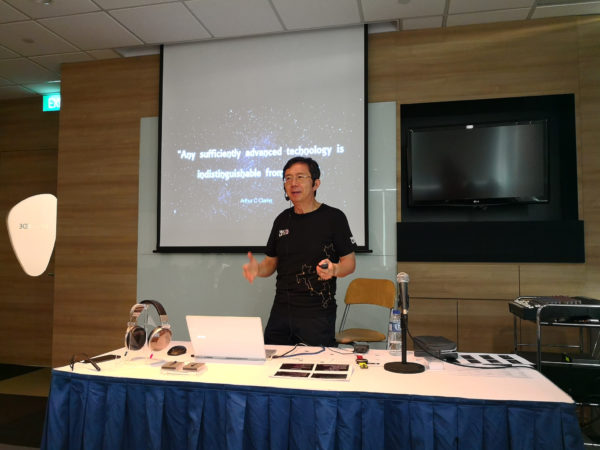
For the man who brought real sound to the PC in the 1990s, listening to headphones was not something that was expected to bring a sort of aural nirvana.
That long-held belief changed for Sim Wong Hoo, the chief executive officer for Creative Technology, when he recently heard his company’s latest innovation – an audio technology that promises to make the sounds from headphones a lot more realistic.
The Super Xi-Fi, unveiled in Singapore this week, attempts to project sound “outside” the ear cups on a headphones for an immersive audio experience. In other words, no more having it boxed in between your ears.
The breakthrough was deemed so important that Sim introduced the technology himself at Creative’s headquarters. He faced a packed room of reporters and analysts keen to catch a glimpse of the company’s first big technology promise in years.
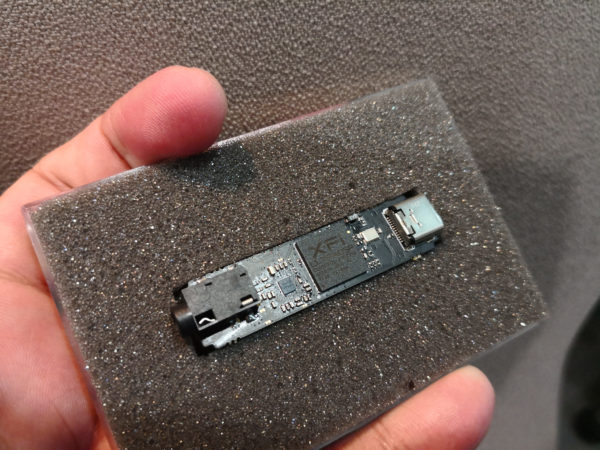
And the Super X-Fi did shine through. The magic is in the algorithm, which is powered by a Creative chip for now. This is included in a US$150 dongle that can be plugged into your favourite headphones.
Essentially, it creates an audio imagery not between your ears but around you. Imagine a 360-degree soundstage.
Though that sounds rather like the 3D sound effects being peddled about in the market now, this is not what Creative is trying to achieve.
What the system does is fairly clever. For the demo, the Creative folks took a photo of both my ears and my face and fed the data into the Super X-Fi system.
It then made a calculation based on my physical characteristics and the room that I was in to create a virtual environment. This goes one step beyond the usual room correction tools that home threatre systems offer today.
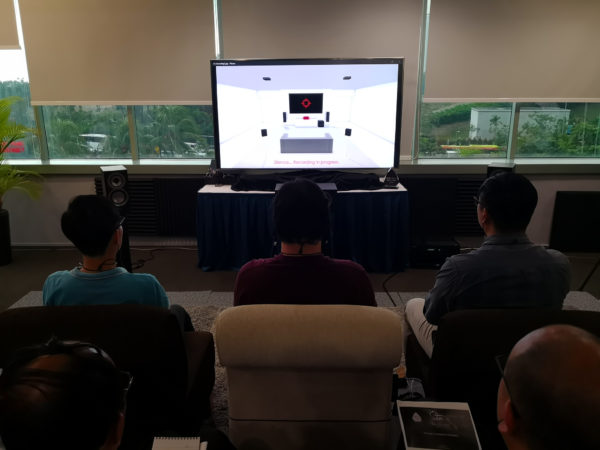
During the audition, the Super X-Fi system created a realistic sense of space as I listened to a soundtrack. It took the audio that would have been usually stuck between my ears and projected “outside” the confines of my head.
I was able to pinpoint the sound sources in a room as well as gauge the distance between them. All this using a pair of Creative headphones.
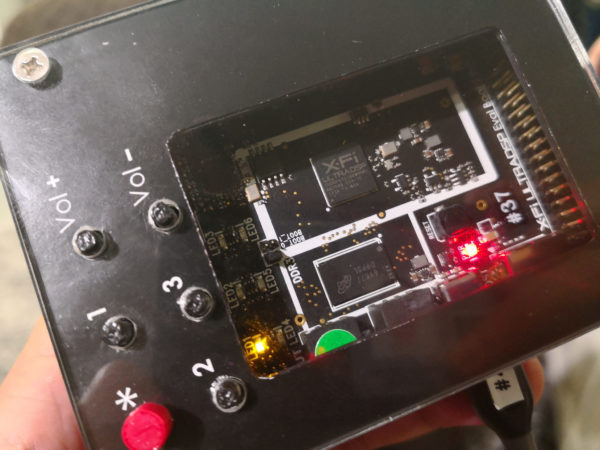
Imagine having such technology in the room as you watched a 4K movie at home. It is as though you are watching it in a cinema with dedicated surround sound speakers, when in fact, the experience is reproduced with headphones.
That’s probably the simplest way to explain the experience, which was firstly about the illusion of space created using only a set of headphones.
I can see myself relishing a more immersive gaming experience playing first-person shooters such as Call of Duty WWII with my PC or PS4, hearing bullets whizz past me as I navigate through the battlefield.
The Creative dongle will be out in the third quarter for US$150 (S$198). Other products such as a wireless headset will be introduced later in the year.
As you’d imagine, Creative is also looking to license this technology to various consumer electronics manufacturers.
So, the Super X-Fi technology will be available to sample for free before June, via an app. With this, you can only play songs stored on a phone and not work with streaming content from, say, Spotify or YouTube.
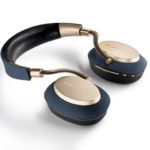






Well it’s June ,where’s the app guys
I would like to add that Samsung S9 comes with Dolby Atmos (3D spatial surround for both speakers and headphones):
http://www.samsung.com/global/galaxy/galaxy-s9/specs/
Creative has yet to demonstrate 3D spatial suround sound for phone speakers.
Samsung S9 outputs audio at 32bit 384kHz, the highest in the audio industry and it comes with custom-tuned earphones.
Creative’s US$150 dongle is only capable of 24bit 96kHz according to their official website.
Razer Phone also comes with Dolby Atmos.
It was not easy for Dolby to convince Samsung. It is inevitable that we will see more big phone makers (Huawei, Xiaomi, Oppo, LG, Apple, Sony, Google) do the same and more mobile app/content support Dolby Atmos in the coming months.
All Windows 10/latest xbox devices already have free Windows Sonic 3D spatial surround sound and the option to use Dolby Atmos Headphones (free 30day trial, $15 one time fee).
The last thing consumer need is wireless headphones that costs much more and drain more power due to Super X-fi chips or an expensive US$150 Super X-fi dongle that uses low-end components and drains power from the phone.
With the current nationalistic Trump Administration, any foreign company has 0 chance to set de facto 3D spatial audio standard in the US and beyond.
i wonder if they could build the ear scanner into the headphone itself. then the headphone would automatically scan the ear shape and customize the profile to each user. then they could offer these on airplanes and movie theatres (say an upgraded IMAX or 3D theatre).
DC. They have an app to measure size of your ears and the distance between your ears. The ear scanner with a scanner will be more expensive I guess. The use case of an airplane is actually a good one, just need to find a way to measure and upload those data to the assigned seat.
The IMAX sound system will still have its use because not every one will appreciate the use of the headset for nearly 2 hours of movies. It will be quite uncomfortable to watch Lord of the Rings trilogy in those too even if the aural experience from the Super X-Fi is close to what we experience with the actual speakers.
I would however look forward to the dongle for mobile entertainment and the HDMI box at the end of the year for my TV and PS4 gaming. That would be sweet!
I do not see how they can sell US$150 dongle. From their official website, it is only for phones. Phone OS does not output 7.1 or 5.1 native audio for you to pull and put it into 2 channels neatly. VR and AR headsets already have their customized HRTF API for content creators. Switch on Super X-fi and you mess up the effect. If the object is supposed to be near me and Super X-fi makes it further, I am going to lose the game. They have no software platform or API for developers (content creators) unlike Oculus, Android, iOS, HTC vive, THX spatial just to mention a few,
According to a freelance blogger who attended the demo, Super X-fi for music sounds worse. I only listen to what the musician wants to give me. If you want the piano to be near my left ear, it should be exactly there. Even if the musician does multi-channel music, they already have software/hardware platforms that can do customized HRTF/binaural/3D audio in 2 channels. Try listening to binaural stuff (BBC click, virtual barber, matchbox, 3D BINAURAL GUITARS WITH SEPARATE STRINGS)
on youtube using normal earbuds and just a phone, tablet, Mac or PC with surround effect off and you will know what I am talking about.
2D camera matching is hit or miss. Microsoft Holo Lens uses 3D depth camera. Oculus VR advises people to use microphones in ears to do matching. iPhone X can do a 3D facial scan.
The HRTF technology behind Super X-fi is not theirs, hence no patent for them. Anyway, Windows 10 has Sonic for HRTF spatial stuff and it can pull 7.1 or 5.1 into 2 channels pretty well. Dolby Atmos headphone also does similar stuff for e.g. in Overwatch. Which one is better is up to the listener.
The burden of creating accurate 3D audio for your headphones lies with content creators, not Super X-fi.
Without a platform or de facto standard for content creators, this whole thing will just be another useless post-processing enhancement product.
Once people wake up from the hype, you may see Creative writing off millions of redundant dongles.
P.S. I am a long time user of Creative products since Soundblaster 16bit. I must admit I initially almost believe in this rubbish until I did extensive research and audio listening myself. I have no long or short position in Creative Technology Ltd shares.
Hi Sharkoon, those are some good points. As a audio geek, I have heard binaural recordings before and yes, they made me turn my head thinking the sound came around around me.
I guess the main selling point for Creative is the customised profiles they can set for each user. Only time will tell if this is something that can be pulled off for the masses. We will also need to test out these dongles and the free app when they become available in the coming months to see if the technology lives up to the promise.
You are right too that Creative’s share price has shot up because of the news of this new technology. Thanks for sharing your thoughts on this. For the sake of transparency, neither the writer Wilson Wong, nor I (the editor of this site) own Creative shares.
i appreciate your skepticism given all the hype. but based on my research i would suggest the following for you to consider:
1. it does not seem relevant to compare SFXI against traditional speakers. we live in a mobile world anad therefore most of our music listening does not occur in front of stationary speakers. we listen to music commuting, walking or working out. while headphones may not be as good as speakers, that is a strawman argument. if mobility were not important we would all be still be listening to vinyl albums and not our iphone.
2. SFXI should be compared against other headphones, such as beats. while headphones can produce excellent clarity and detail, i have not found any that can project a 3D aural effect. it is hard to believe that SXFI can do this, but unless all the reviewer are lying it seems that they have.
3. i am not sure if you have seen the AVS demo at CES, but it does provide some deeper insights. AVS reviews products for a living. they have reviewed thousands of AV products. they awarded best of CES to SXFI. you can check them on twtitter.
https://www.youtube.com/watch?v=mAidEm9_JYM&feature=youtu.be&a=
4. there is nothing wrong with SXFI being a post-process enhancement product. everything digital is processed sound. the real question is how good is this processs. from the demos i have seen and read, it does seem that SXFI is on to something innovative and impressive. they won multiple best of CES awards for a reason.
5. it is not true that they do not have anythingn proprietary. if you watch the video, you will understand that their proprietary tech is their AI and built-in profiles based on thousands of human measurements. they have purportedly spent 5 years and 100mm developing this. this is a tremendous head start.
6. it is this proprietary AI that allows them to bring a simple/seamless/cost-effective solution to the masses. without this, the cost and complexity of the calibration process would likely dissuade mass adoption. the masses require things to be quick and simple.
7. at the very last, there is a huge application for this in home theatre and probably also gaming. most people cannot install a surround system, especially not one for their computer gaming. they either do not have the space or budget (or their wives wont allow it). SXFI seems like a very, very cheap alternative which in some reviews is better than actual speakers. think about it. you can get a surround system for $1000-$5000 or you and spend $150 + headphones and it fits in your backpack.
just my 2 cents.
sharkoon.. i just got these. i am listening to them now. they are way better than anything i have heard. mind blowing is the right phrase. while it may be a post-processing product, it is amazing.
i hope it becomes the new standard. it is as significant as going from mono to stereo.
if mono is 1D and stereo is 2D and dolby atmost is 3D then SXFI is 4D.
have you heard them yet?
Hi DC, I guess now your point (2) is ‘truthfully’ debunked! Thanks for reading Techgoondu.
Truly a magnificent invention by a spore team led by a genius standing as tall as Steve Jobs , Bull Gates , Zuckerberg . Proud of Mr.Sim Mong Hoo for putting the little red dot prominently on the World map .
Yes, it’s good to see Sim back with a promising technology. We hope to try out Super X-Fi more as it becomes available in the market this year. Looking forward to it!